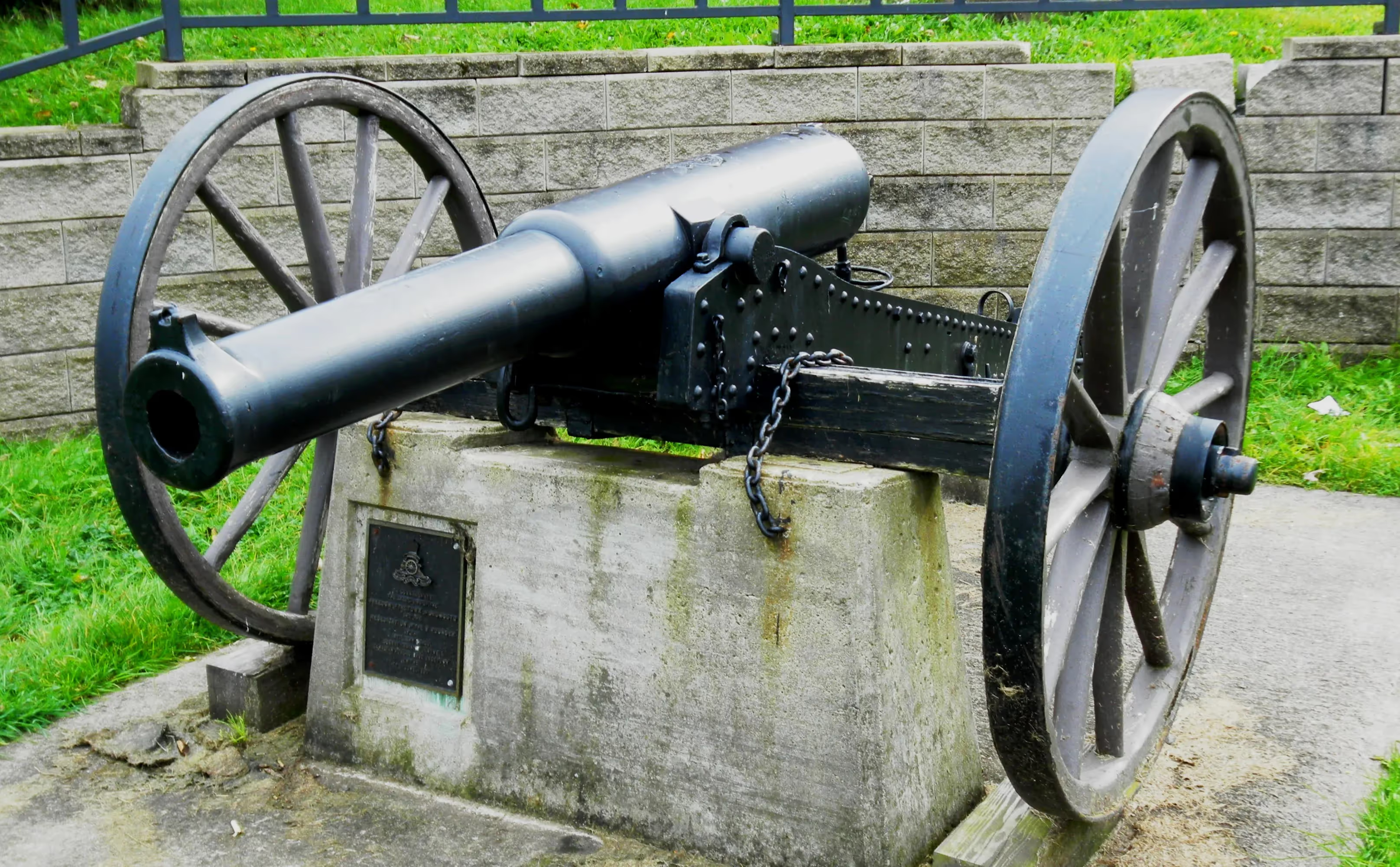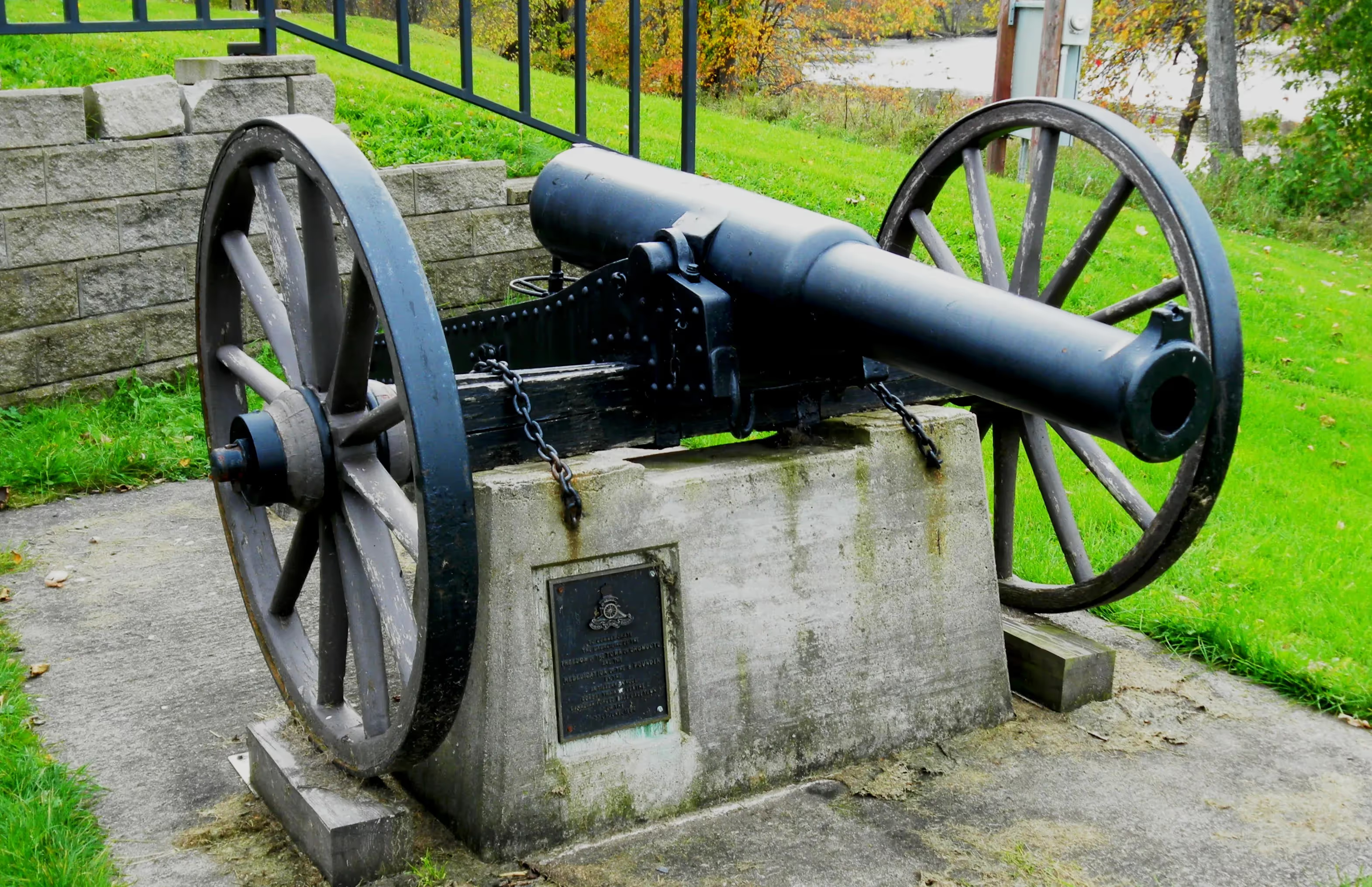Artillery in Canada (7) New Brunswick: North Head, Grand Manan Island, Oromocto, Perth-Andover, Rogersville, and Rothesay
Artillery preserved in New Brunswick
Artillerie préservée au Nouveau-Brunswick
North Head, Grand Manan Island, Oromocto, Perth-Andover, Rogersville, and Rothesay
The aim of this website is to locate, identify and document every historical piece of artillery preserved in Canada. Many contributors have assisted in the hunt for these guns to provide and update the data found on these web pages. Photos are by the author unless otherwise credited. Any errors found here are by the author, and any additions, corrections or amendments to this list of Guns and Artillery in Canada would be most welcome and may be e-mailed to the author at [email protected].
For all official data concerning the Royal Regiment of Canadian Artillery, please click on the link to their website:
Royal Regiment of Canadian Artillery Website
Note: Back in the day, artillery in Canada was referred to by its radio call sign "Sheldrake". It is now referred to by its "Golf" call sign. (Acorn sends)
Une traduction au français pour l'information technique présente serait grandement apprécié. Vos corrections, changements et suggestions sont les bienvenus, et peuvent être envoyés au [email protected].
New Brunswick
North Head, Grand Manan Island






Bronze 6-pounder 6-cwt Smoothbore Muzzleloading Gun, weight 5-3-20 (664 lbs), inscribed TRIA JUNCTA IN UNO (three joined in one), (Serial No. MCMLXVI) (1966), left and right trunnions blank, Queen Victoria cypher, S. ECCLES 1853, No. 3 on the button. On the chase is the Master General of Ordnance's (MGO) emblem for Fitzroy James Henry Somerset , the 1st Baron Raglan, MGO in 1852-55. His highest award was the Order of Bath. This British bronze gun has a 92-mm calibre. Its length with the button is 1.64 metres and without the button is 1.53 metres. The distance from the muzzle to the trunnion axis is 850-mm. Trunnion axis length is 365-mm. No. 1 of 2 guns flanking the cenotaph facing the water in front of the church on Cemetery Road at Grand Head. NICMM record No. 13003-012.


=







Bronze 6-pounder 6-cwt Smoothbore Muzzleloading Gun, weight 5-3-24 (668 lbs), inscribed TRIA JUNCTA IN UNO (three joined in one), (Serial No. MCMLXVI) (1966), left and right trunnions blank, Queen Victoria cypher, S. ECCLES 1853, No. 3 on the button. On the chase is the Master General of Ordnance's (MGO) emblem for Fitzroy James Henry Somerset , the 1st Baron Raglan, MGO in 1852-55. His highest award was the Order of Bath. This British bronze gun has a 92-mm calibre. Its length with the button is 1.64 metres and without the button is 1.53 metres. The distance from the muzzle to the trunnion axis is 850-mm. Trunnion axis length is 365-mm. No. 2 of 2 guns flanking the cenotaph facing the water in front of the church on Cemetery Road at Grand Head. NICMM record No. 13003-012.


Bronze Lyle type Smoothbore Muzzleloading Gun (2.5-inch bore) recovered from the tugboat Gypsum King, ca late 1800s to early 1900s. This Lyle type gun is one of two in the Grand Manan Island Museum. It was used to fire life lines from ship or shore. Light-weight rope was shot out to a wreck after it had been carefully wound on a rope-board so it would uncoil without snagging. The crews would then use this rope to haul out the heavier lines which actually carried the breeches buoy. The survivors would brought ashore or to the tugboat in a breeches buoy, which was a pair of canvas pants sewed onto a life-preserver. These line guns are used primarily for shore based rescue operations. The shooter would fire, aiming over the victims head and then pull the line within reach of the victim. They are also useful for rescuing victims that have fallen through the ice, or are stranded on a cliff or burning building. Boats in distress need larger lines. Lyle guns were designed to throw projectiles weighing approximately 15 pounds, carrying heavier rope over 1000 feet. Getting this equipment close to a wreck would have been difficult, given the likelihood the conditions that caused the wreck would still have been present.
Oromocto, Fort Hughes
A reconstructed British wooden blockhouse (1781 - 1782, 1813 - 1815), was located at Sir Douglas Hazen Park at 1 Wharf Road. It was originally built to protect the local masting operations, and as a relay station between Halifax, Nova Scotia and Québec City, Quebec. It was rebuilt and re-garrisoned in 1813, with plans for it to be used as a place of refuge and defence if Saint John were to be captured.





9-pounder 8-cwt Muzzleloading Rifle, weight 8-1-8 (932 lbs), Sir W.G. Armstrong and Co., RGF No. 2357, 1873, Newcastle on the Tyne on the trunnion. A Gun of this type was used in the North West Rebellion, 1885. Fort Hughes, Sir Douglas Hazen Park.

105-mm C1A1 M2A2 Howitzer, CFR unknown, Serial No. 17945, 1944, weight 1,060 lbs, standing in front of Royal Canadian Legion, Branch No. 93.
Oromocto, 5 Division Support Group Base Gagetown and the New Brunswick Military History Museum
The web page has become to big for all of the guns in New Brunswick to be listed here. The guns on display at 5 Canadian Division Support Group Base Gagetown are listed on a separate web page on this website.
Perth-Andover



German First World War 7.7-cm Feldkanone 96 neuer Art (7.7-cm FK 96 n.A.), (Serial Nr. 4095), no data, Fr.Kp., 5012. M. Kp., 4598. S. BNA 18. Royal Canadian Legion Branch No. 36. This FK 96 was likely captured ca 1918 by a Battalion of an Infantry Brigade in a Canadian Division with the Canadian Expeditionary Force (CEF), in France.
Riverview
Centurion Main Battle Tank, 20-pounder Gun, 8 CH, Casley Park, Bradford Road.
Rogersville

(DHH Photo)
Cast Iron Smoothbore Muzzleloading Gun mounted on a wheeled wooden carriage beside the cenotaph.
Rothesay

6-pounder 7-cwt QF Anti-Tank Gun, Kennebeccasis Royal Canadian Legion Branch No. 58, 61 Marr Road.





